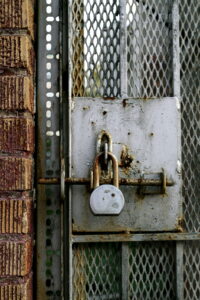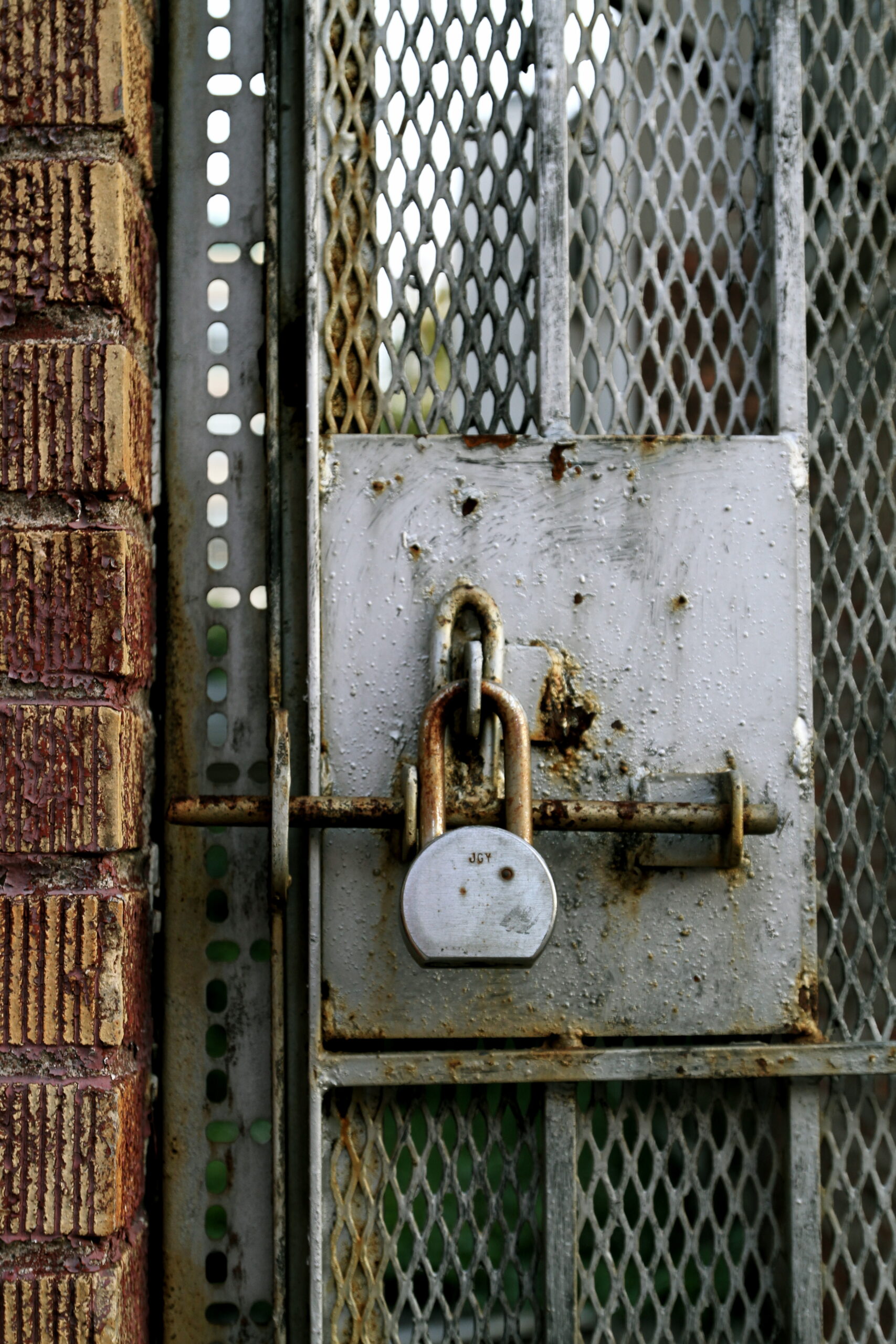
Locked Secrets of New York City, courtesy of Eric Joseph Reitmeyer
In New York City, the rotten bunch of vagabond artists, dream-seeking hooligans and ageing vagrants stagger with exhaustion, a heavy load, or intoxication. Gnarling shamelessly at urban gentrification that has swallowed their landmark neighbourhoods; many exchanged loft apartments for empty factory corners and “squalors”—hobo slang for wretched and filthy buildings—located in city outskirts, until those too become infested with gentry. But few have stuck to the streets: These folks, succumbing to Old NYC memories of scandalous glamour, perpetual squalor and blunt homosexuality have resided for decades inside crumbles and cracks of alleyways, hallways and stairways.
It was Downtown’s Meatpacking District that first became subject to cranes and bulldozers, then Lower Manhattan’s Bowery and now Brooklyn’s Williamsburg—though Red Hook is still holding on. Uptown’s Harlem, a favorable residence for Columbia University students, awaits the hammer next. Seemingly, NYC betrayed its old street reigned by low-life junkies, convicted murderers and schizophrenics mistaken for malodorous artists. But clever wits that delayed the construction of terraced loft apartments in say, the Bowery or West Village, can resist no longer. Self-made entrepreneurs and trendy, out-of-town hipsters soon replaced iconic relics as recently as 2005 when in fact they had survived for decades. Thus, the Bowery’s notorious flophouses, run-down theaters and squalid hotels leave few with hell-day memories.
The city of a million spirits
One such example was the Sunshine Hotel. Overlooked by the newly raised New Museum with its “hello” signage painted in rainbow colors, the original hotel sign symbolized final destinations. For a nightly flat fee of $10, rooms—smaller than prison cells at four by six—pigeon-holed strayed artists, jaded priests, serial killers, Vietnam Veterans and other social outcasts. Chicken wire decorated the ceilings, so that guests and tenants “wouldn’t climb over to the other rooms,” manager Nathan Smith once explained, eventually closing its doors in 2005.
The Bowery’s music halls and clubs encountered similar fate and misfortune. A year after Sunshine’s closing, CBGB manager Hilly Kristal closed the famous Punk and Blues venue as a result of lasting rental disputes with owner. Luckily, American high fashion designer John Varvatos served justice by preserving its urinals and opening his fashion label in its place. “It took about three months to get the stench of cigarettes and booze out of here,” Varvatos was quoted in a city daily newspaper. “We had the front and back doors open during that time and the cross-breeze did wonders to clear out the place.”
Former CBGB performer Nick Taylor and his band Gray, founded by graffiti artist Jean Michel Basquiat, recollected the Bowery’s rawness. Without daring to enter Sunshine, Taylor settled in the Mudd Club where he played music and drank shots for $0.25. In the early morning hours, close to “a hundred white boys” roamed Mudd’s sidewalk, recalled Taylor.
Taylor was regularly frisked by police officers during the peak of street-sold Crack Cocaine. Because he befriended graffiti artists who sold drugs, he posed as dangerous suspect, often mistaken for a drug dealer. Tensions heightened in the 80s, with arrival of AIDS, exposing many artists who shared needles regularly. “There was a lot of psychedelic thinking back then,” said Taylor, mentioning the spiritual love between Andy Warhol and Basquiet often found tongue-locked at parties. “But the city is safer now,” he said, convinced the streets today are run like a police state. With help from close to five thousand volunteer police officers—the largest community initiative in the country, the streets are indeed safer. Hoping to draw little attention from cops, Gray will hold their first performance this year at the New Museum since Warhol’s death in 1987, and Basquiat’s in 1988.
Public prostitution inside John McGurk’s Suicide Hall, added to the mayhem. Low-ranking women and girls came to the nightlife haunt, a tawdry establishment, to sell cheap sex. Smack central in Bowery’s old red light district, the dive bar faced doomsday—teenaged tramps killed themselves with carbolic acid or leapt from the fifth floor. McGurk eventually closed the joint and moved to California, leaving vacancy for gangs and drug-dealers before it became a glass condominium a few years ago.

The Bower, courtesy of Eric Joseph Reitmeyer
Saint Marks Place, a street in the Bowery, unlocked its own legendary decay; an eerie specter marked by old German churches, threatened by new development. The Arlington Hall, originally built as a German music club headquarters, maintained its transformative musical pedigree for a century. It became a Polish National Home in mid-century and later, nightclub Electric Circus, where Lou Reed and Velvet Underground played for Andy Warhol. Jimi Hendrix and the Grateful Dead performed there are well. A community rehab center sealed its musical history, before restaurant clusters filled its archways. Reviving St. Mark’s long-lost traditions while safeguarding its memorabilia, restaurants rarely negotiated real estate contracts with developers.
Jimi Hendrix’s Electric Lady Studios, connecting St. Marks Place and West Village on 8th St., held ground in the tumult. Manager Lee Foster once found Studio A, housing Hendrix’s Steinway & Sons white piano and Stevie Wonders’ keyboard, flooded from an underground water stream. He collected water in buckets as the city slept peacefully. For decades, deep rumbles and screeching breaks escaping a nearby subway station disturbed jam sessions…and so did ghosts. “They spooked musicians in the past,” said Foster. Mike Brauer, album producer for Coldplay, U2 and John Meyer, and permanent resident artist in Studio C, escaped their haunting.
Perhaps it was Marilyn Monroe’s ghost that haunted, unofficially, Times Square’s Malin Studios. Chronically late for class, she slipped through its doors, wearing a headscarf, dark shades and no makeup. Down the street, a billboard advertising Billy Wilder’s film The Seven Year Itch, flaunted her curves in the iconic wind-blown white dress. After her death, film teacher Lee Strassberg inherited her possessions and today, his third wife licenses her images, pocketing millions of dollars annually.
Hotel Waldorf Astoria rented Monroe an apartment, but never cherished her treasures. A lesser known hotel nicknamed “The Jane,” still displays Bob Marley portrait photography in its saloon. Historically, the West Village boutique hotel comforted sailors and Titanic survivors. Built by the architect of Ellis Island—an immigrant’s gateway into America’s scramble for golden opportunities—The Jane for many years granted affordable rates, polishing its cabin rooms. A single bed rents for a hundred bucks a night and a flirt with the ballroom’s Victorian décor and Bohemian clientele.
In contrast, a horse stable converted into an apartment rents in the thousands, at Union Square’s Irving Plaza neighborhood. A famous artist left behind his wooden art easel, adding a nice fixture to its high ceilings. Philadelphia’s luminary artist Warren Mueller at one time afforded his art studio in the West Village. In its place, restaurant Il Buco hangs his lanterns and welcomes poetry students into the basement, where writer Edgar Allen Poe wrote “The Cask of Amontellado.” Mueller, who believes that one of the story’s characters was sealed in one of the cellar’s archways, said, “Every year, the class from NYU would come down there to see the sealed crypt and talk about the buried body. It was finally opened by the current resident of the restaurant to make a wine cellar.” Of course, no corpse was found.
This was New York City, and still is—vibrant with history, raw in attitude, reckless in behavior. A city to conceal, discover, rediscover. A place altered by gentrifiers, where old residents became nomads and story-tellers. A memory forever captured in cracked bricks, spray-painted urinals, and treasured photographs.
The full featured article in RagMag September 2011 (PDF)
[issuu width=550 height=359 pageNumber=121 backgroundColor=%23222222 documentId=111007102955-4082484193bd40fc9a073640b90e5b50 name=ragmag_september_2011 username=ragmag tag=aaed%20ghanem unit=px id=b77d8797-7778-d1ae-51f6-017ab7c9bee1 v=2]





